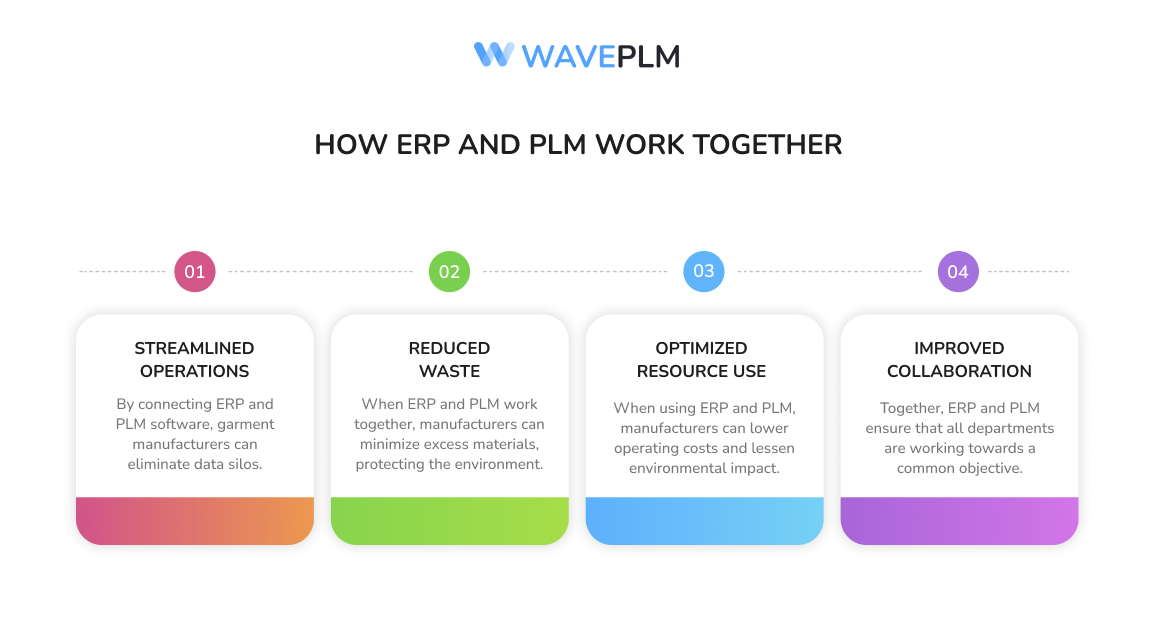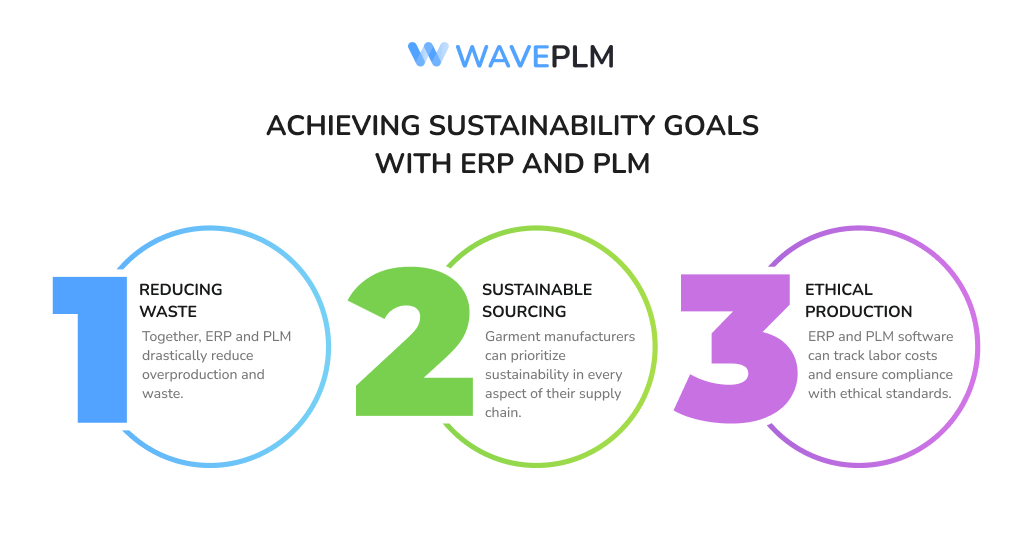
In today’s fashion industry, sustainability is more important than ever. Garment manufacturers are under pressure to reduce waste, optimize resources, and support ethical practices. To achieve these goals, many are turning to technology.
Two essential tools for sustainable garment manufacturing are ERP (Enterprise Resource Planning) software and PLM (Product Lifecycle Management) software. Together, they streamline processes, enhance visibility, and help manufacturers stay competitive while meeting sustainability targets.
What is ERP Software in Garment Manufacturing?
ERP for clothing manages the day-to-day operations of a business. For garment manufacturers, this includes everything from inventory management to order processing and accounting. ERP software for the garment industry integrates various departments like finance, production, and logistics. This ensures all teams work together seamlessly and efficiently.
Using garment manufacturing ERP software helps businesses monitor their resource use and reduce waste. By providing real-time data, ERP systems ensure manufacturers only produce what is necessary. This limits overproduction, a major issue in fashion, where excess stock often leads to wasted materials.
What is PLM Software?
PLM software is designed to manage the entire lifecycle of a product, from concept to production. In the fashion industry, PLM software helps garment manufacturers manage design, sourcing, and development processes. It provides a centralized platform where teams can collaborate on product designs, making changes and updates visible to all departments.
PLM software also ensures that every garment is created with sustainability in mind. Designers can track the materials used and choose eco-friendly options. It also allows manufacturers to assess the environmental impact of their production methods, helping them reduce their carbon footprint.
How ERP and PLM Work Together
While ERP and PLM systems have different focuses, they complement each other. PLM software helps garment manufacturers manage the design and development phase. ERP software takes over during production, distribution, and financial management. When combined, these systems create a fully integrated approach to sustainable garment manufacturing.
- Streamlined Operations
By connecting ERP and PLM software, garment manufacturers can eliminate data silos. Information flows freely between departments, reducing errors and inefficiencies. For example, if a designer updates a product specification in the PLM system, the ERP software will automatically reflect those changes. This prevents miscommunication and ensures that the product is manufactured according to the latest design. - Reduced Waste
One of the main goals of sustainable manufacturing is to reduce waste. ERP for garment manufacturers helps by tracking inventory levels and ensuring that manufacturers only produce what they need. PLM software contributes by enabling manufacturers to design products with less waste from the beginning. When these two systems work together, manufacturers can minimize excess materials, saving money and protecting the environment. - Optimized Resource Use
Both ERP and PLM software play a role in optimizing resource use. PLM software helps manufacturers choose sustainable materials, while ERP software ensures efficient production and inventory management. By reducing resource consumption, manufacturers can lower their operating costs and lessen their environmental impact. - Improved Collaboration
Collaboration is key to achieving sustainability in garment manufacturing. PLM software provides a platform for designers, sourcing teams, and suppliers to work together. ERP software allows production, finance, and logistics teams to align their efforts with sustainability goals. Together, these systems ensure that all departments are working towards a common objective.

Achieving Sustainability Goals
Sustainability in garment manufacturing involves several key factors: reducing waste, using eco-friendly materials, and ensuring ethical labor practices. ERP and PLM systems help manufacturers achieve all of these goals.
- Reducing Waste
Overproduction is a significant issue in the fashion industry, contributing to excess waste. ERP software tracks inventory and sales data in real-time, helping manufacturers produce only what they need. PLM software ensures that designers create products with minimal waste in mind. Together, these systems drastically reduce overproduction and waste. - Sourcing Sustainable Materials
Sourcing is another critical aspect of sustainable garment manufacturing. PLM software allows designers to select materials based on their environmental impact. ERP software manages the procurement process, ensuring that materials are ordered in the correct quantities and delivered on time. By using both systems, garment manufacturers can prioritize sustainability in every aspect of their supply chain. - Ethical Production Practices
Sustainability isn’t just about the environment. Ethical labor practices are equally important. ERP software tracks labor costs and ensures compliance with ethical standards. PLM software can also track sourcing and production processes, helping manufacturers choose suppliers with fair labor practices.
By combining ERP and PLM software, garment manufacturers can ensure that their entire production process is ethical and sustainable.

Supporting Ethical Production Practices
Achieving ethical production practices goes hand in hand with sustainability. PLM software helps manufacturers track every step of their product’s journey, ensuring they meet ethical standards. Manufacturers can use it to choose suppliers that follow ethical labor practices. This supports a transparent and responsible supply chain, enhancing brand credibility.
Meanwhile, ERP software tracks labor costs and ensures factories comply with labor laws. It can also monitor factory conditions to ensure workers are treated fairly. By integrating ERP and PLM software, garment manufacturers ensure their products meet ethical standards from start to finish.
Enhancing Profitability While Staying Sustainable
Sustainability and profitability don’t have to be at odds. In fact, ERP and PLM software can help garment manufacturers achieve both. By optimizing resource use and reducing waste, manufacturers lower costs and improve efficiency.
ERP software ensures accurate inventory management, preventing overproduction and excess inventory. This reduces the costs associated with storing unsold items and lowers the risk of markdowns.
At the same time, PLM software enables manufacturers to design products with sustainability in mind. By using eco-friendly materials and reducing waste during the design phase, manufacturers can lower production costs and create products that appeal to environmentally conscious consumers.
Conclusion
Sustainability is no longer optional for garment manufacturers. Consumers are demanding more transparency and ethical practices from fashion brands. By combining ERP and PLM software, manufacturers can meet these expectations and work towards a more sustainable future.
ERP software optimizes the production process, ensuring efficient use of resources. PLM software ensures that garments are designed with sustainability in mind, from the materials used to the production methods. Together, these tools help garment manufacturers achieve their sustainability goals while remaining competitive in the market.





Leave a Reply